A Method for Restoring γ-Radiation Scene Images Based on Spatial Axial Gradient Discrimination
Abstract
:1. Introduction
2. Mechanism and Characteristic of γ-Radiation Scene Image Noise
3. Proposed Method
3.1. Inter-Frame Differential for Detection of the Position of Noise
3.2. Calculation and Discrimination of Spatial Axial Gradients
3.3. Axially Adaptive Weighted Median Filtering
- (A).
- Assuming that is a collection of m pixel gray values adjacent to the (x, y) point on the axis, , , and , respectively, denote the maximum, minimum, and middle values in . If and , then the output is the middle value of axial; otherwise, it enters layer B;
- (B).
- Steps A after m = m + 2 are repeated until the output is reasonable, Zmed;
3.4. Wallis Sharpening
4. Experiment Conditions and Platform
5. Result and Discussion
5.1. Visual Contrastive Analysis
5.2. Quantitative Index Analysis
5.2.1. Effect of the Adjacent Pixels Number n
5.2.2. Effect of the Threshold T in Interframe Difference
5.2.3. Effect of the Frame Number f in Interframe Difference
5.3. Comparative Analysis
6. Conclusions
Author Contributions
Funding
Institutional Review Board Statement
Informed Consent Statement
Data Availability Statement
Conflicts of Interest
References
- Marques, L.; Vale, A.; Vaz, P. State-of-the-Art Mobile Radiation Detection Systems for Different Scenarios. Sensors 2021, 21, 1051. [Google Scholar] [CrossRef] [PubMed]
- Tsitsimpelis, I.; Taylor, C.J.; Lennox, B.; Joyce, M.J. A review of ground-based robotic systems for the characterization of nuclear environments.Prog. Nucl. Energy 2019, 111, 109–124. [Google Scholar] [CrossRef]
- Lu, X. Research on Color Image Reconstruction Method of Contact Image Sensor. Ph.D. Thesis, Wuhan University, Wuhan, China, 2017. [Google Scholar]
- Liu, C.; Yan, Z.; Deng, J. Research status and key technology analysis of emergency robot in nuclear power plant. Nucl. Sci. Eng. 2013, 33, 97–105. [Google Scholar] [CrossRef]
- Wang, H.; Feng, J. Influence of noise of CMOS image sensor on camera resolution in strong radiation environment. Energy Sci. Technol. 2022, 56, 775–782. [Google Scholar]
- Feng, J.; Wang, H.-C.; Li, Y.-D.; Wen, L.; Guo, Q. Mechanism of Total Ionizing Dose Effects of CMOS Image Sensors on Camera Resolution. Electronics 2023, 12, 2667. [Google Scholar] [CrossRef]
- Zhang, H.; Lin, S. Research Progress with Membrane Shielding Materials for Electromagnetic/Radiation Contamination. Membranes 2023, 13, 315. [Google Scholar] [CrossRef] [PubMed]
- Cao, X.; Li, Y.; Zhan, Y.; Chen, X.; Kang, F.; Wang, J.; Liang, J. Removing Noises Induced by Gamma Radiation in Cerenkov Luminescence Imaging Using a Temporal Median Filter. BioMed Res. Int. 2016, 2016, 1–9. [Google Scholar] [CrossRef] [PubMed]
- Wang, H.; Sang, R.; Zhang, H.; Xie, X. A new method for image noise reduction under intense radiation environment monitoring. Transducer Microsyst. Technol. 2011, 30, 59–61. [Google Scholar]
- Zhang, Z.; Cheng, Y.; Zhao, J. Video in radiation environments denoise using Wavelet and Kalman filter. In Proceedings of the 2019 16th International Computer Conference on Wavelet Active Media Technology and Information Processing, Chengdu, China, 14–15 December 2019; IEEE: Piscataway, NJ, USA, 2019; pp. 290–294. [Google Scholar]
- Hosoya, N.; Miyamoto, A.; Naganuma, J. Real-Time Color Image Improvement System for Visual Testing of Nuclear Reactors. IEICE Trans. Inf. Syst. 2018, 101, 1243–1250. [Google Scholar] [CrossRef]
- Chen, S.; Qiu, Y.; Feng, J. A Nonlinear Filter Based on Row and Column Operation for Positive Impulsive Noise Reduction. In Proceedings of the 2009 Asia-Pacific Conference on Information Processing, Shenzhen, China, 18–19 July 2009; IEEE: Piscataway, NJ, USA, 2009; Volume 2, pp. 44–46. [Google Scholar]
- Ren, Z. Research on Radiation-Degraded Image Information Recognition Technology Based on Deep Learning. Master’s Thesis, Harbin University of Science and Technology, Harbin, China, 2022. [Google Scholar]
- Sun, Y.; Liu, H.; Cong, P.; Li, L.; Xiang, X.; Guo, X. Research on noise reduction method of radiation image based on convolutional neural network. Energy Sci. Technol. 2017, 51, 1678–1682. [Google Scholar]
- Lehtinen, J.; Munkberg, J.; Hasselgren, J.; Laine, S.; Karras, T.; Aittala, M.; Aila, T. Noise2Noise: Learning Image Restoration without Clean Data. arXiv 2018. [Google Scholar] [CrossRef]
- Tian, C.; Fei, L.; Zheng, W.; Xu, Y.; Zuo, W.; Lin, C.W. Deep learning on image denoising: An overview. Neural Netw. 2020, 131, 251–275. [Google Scholar] [CrossRef] [PubMed]
- Goiffon, V.; Estribeau, M.; Magnan, P. Overview of Ionizing Radiation Effects in Image Sensors Fabricated in a Deep-Submicrometer CMOS Imaging Technology. IEEE Trans. Electron Devices 2009, 56, 2594–2601. [Google Scholar] [CrossRef]
- Niccolai, S.; Chatagnon, P.; Hoballah, M.; Marchand, D.; Camacho, C.M.; Voutier, E. Deeply virtual Compton scattering on the neutron with positron beam. Eur. Phys. J. A 2021, 57, 1–6. [Google Scholar] [CrossRef]
- Ali, M.M.M.; Zhao, H.; Rawashdeh, A.; Mohammed, Y.A. Assessment of Radiation Hazard Indices for Sand Samples from Ma’rib in Yemen. Int. J. Radiat. Res. 2021, 19, 615–623. [Google Scholar] [CrossRef]
- Xue, Y.; Wang, Z.; Liu, M.; Xu, R.; Ning, H.; Zhao, W.; He, B.; Yao, Z.; Sheng, J.; Ma, W. Analyzing the Transient Effects of 60Co Υ-Rays in a CIS by Monte Carlo Method. Nucl. Sci. Tech. 2019, 30, 116. [Google Scholar] [CrossRef]
- Belloir, J.-M.; Virmontois, C.; Estribeau, M.; Goiffon, V.; Magnan, P.; Materne, A.; Bardoux, A. Radiation Effects in Pinned Photodiode CMOS Image Sensors: Variation of Photodiode Implant Dose. IEEE Trans. Nucl. Sci. 2019, 66, 1671–1681. [Google Scholar] [CrossRef]
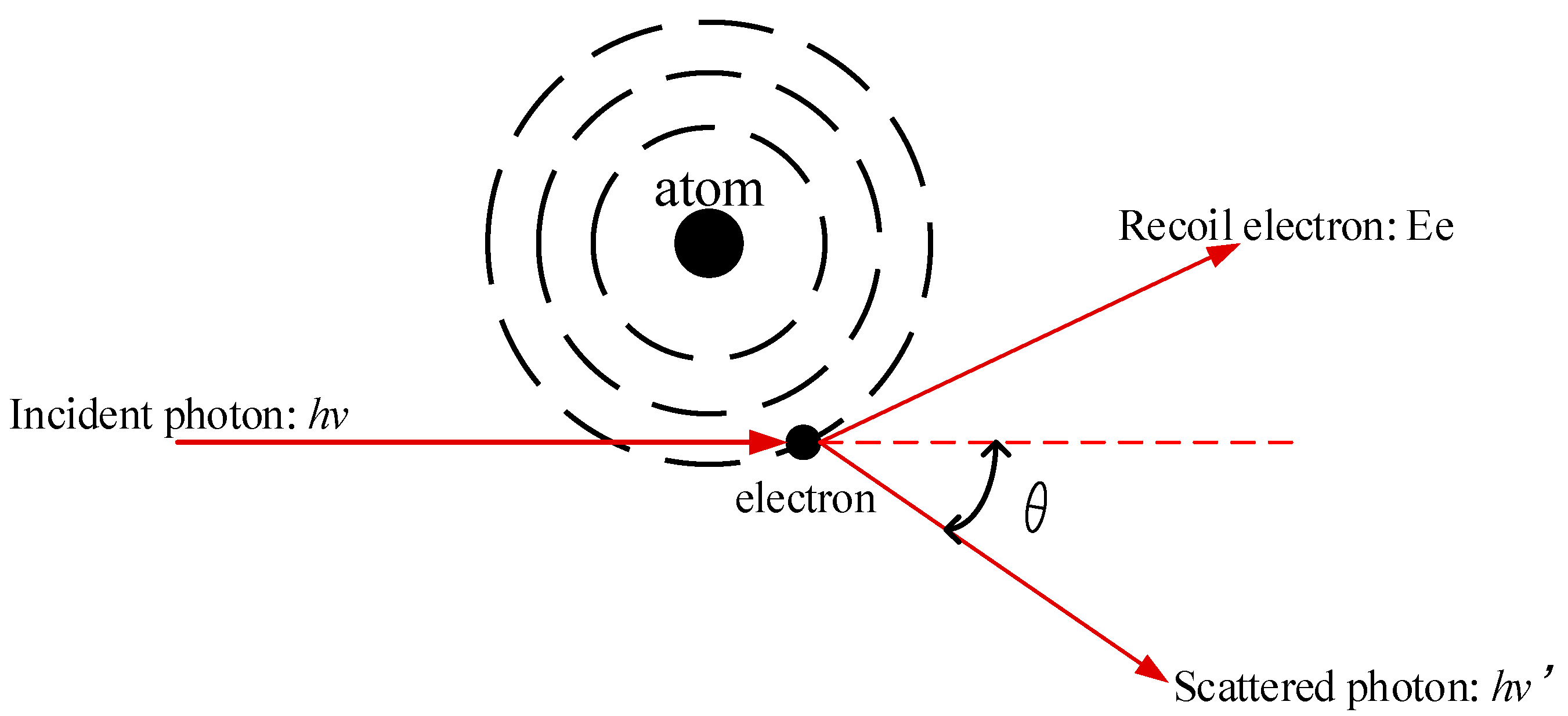
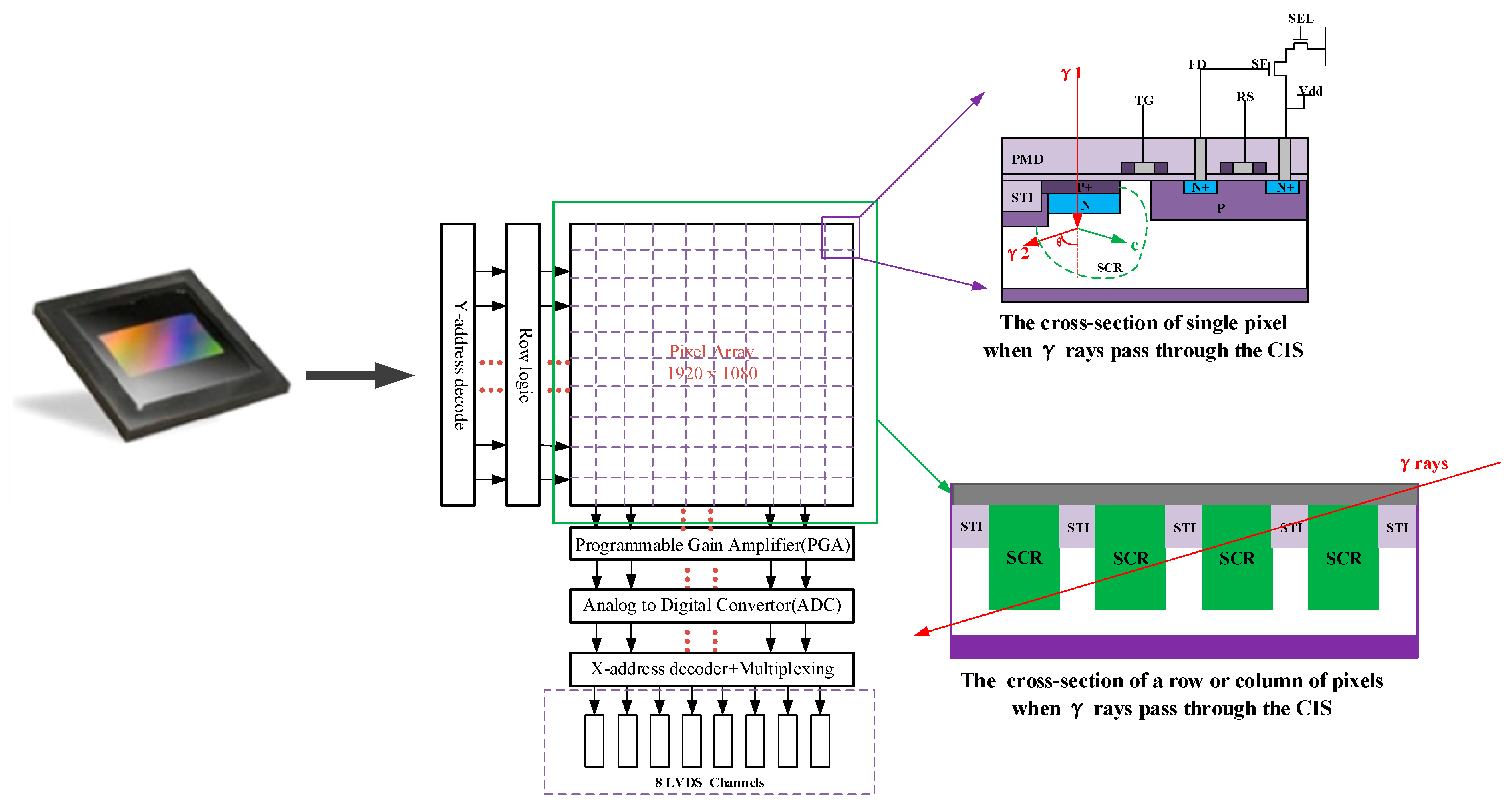

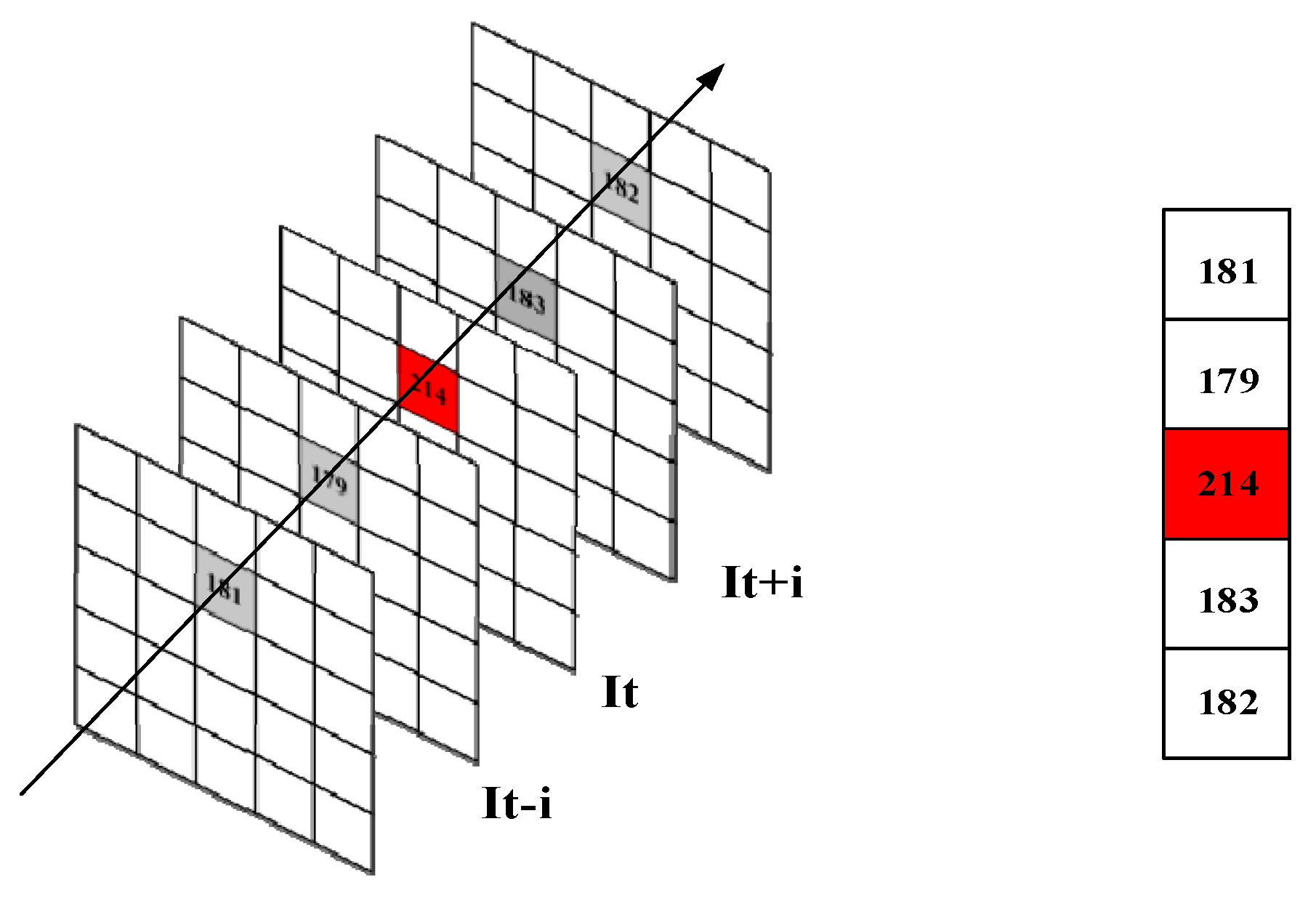
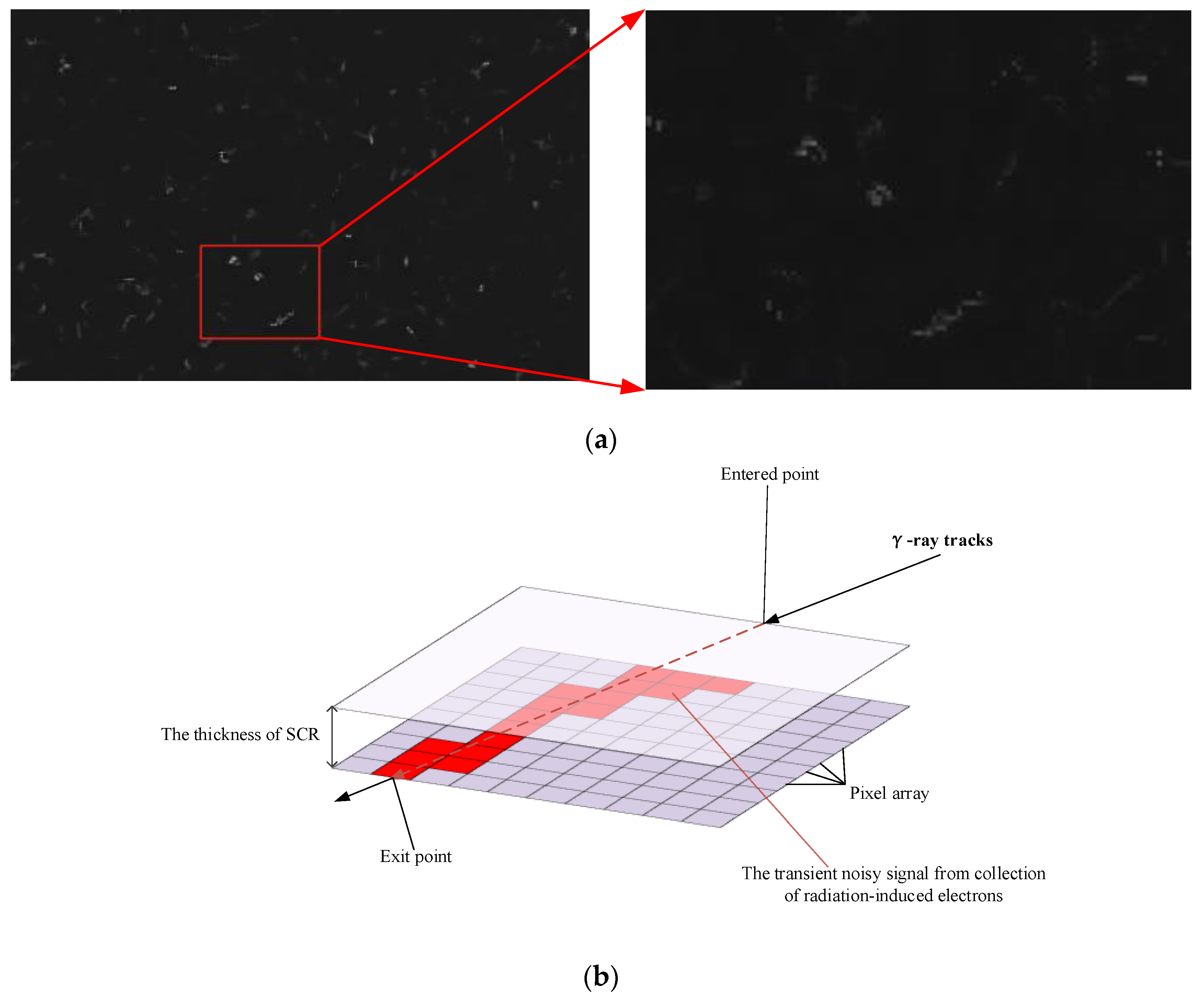
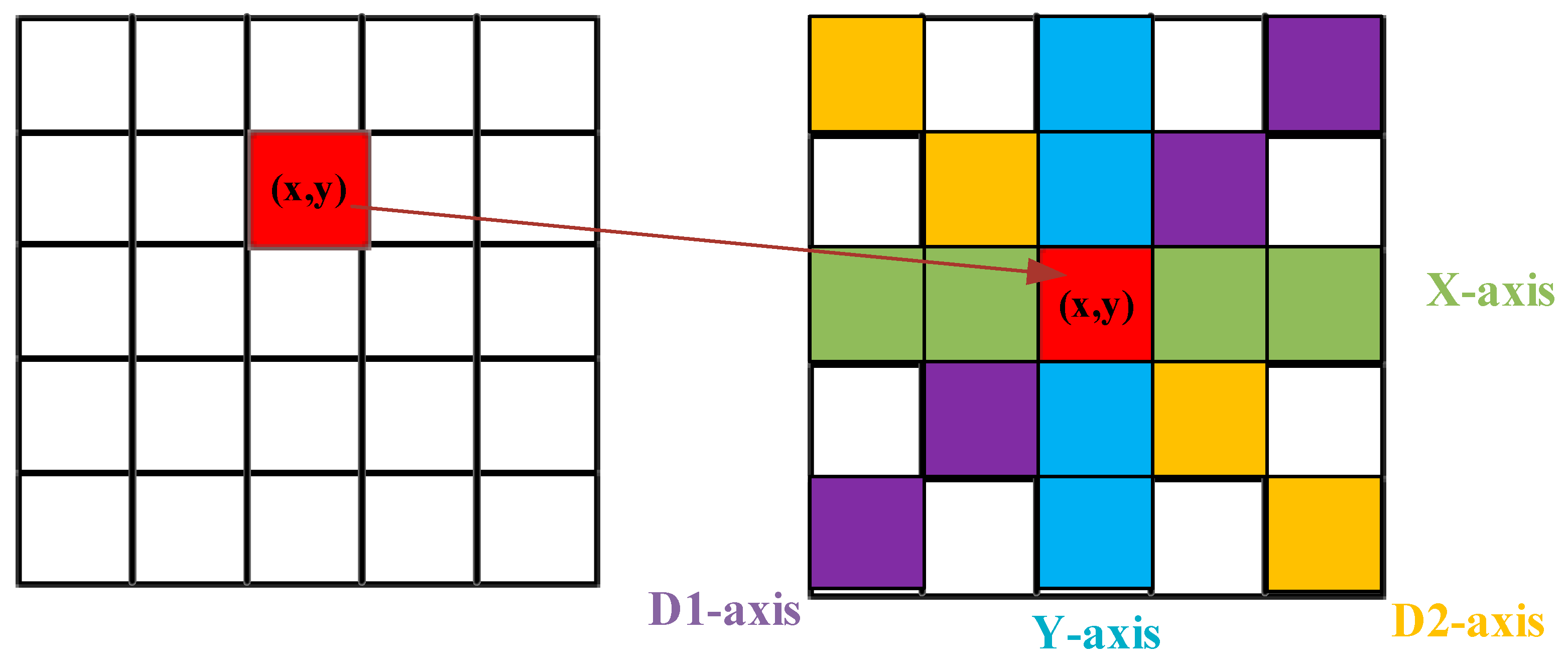


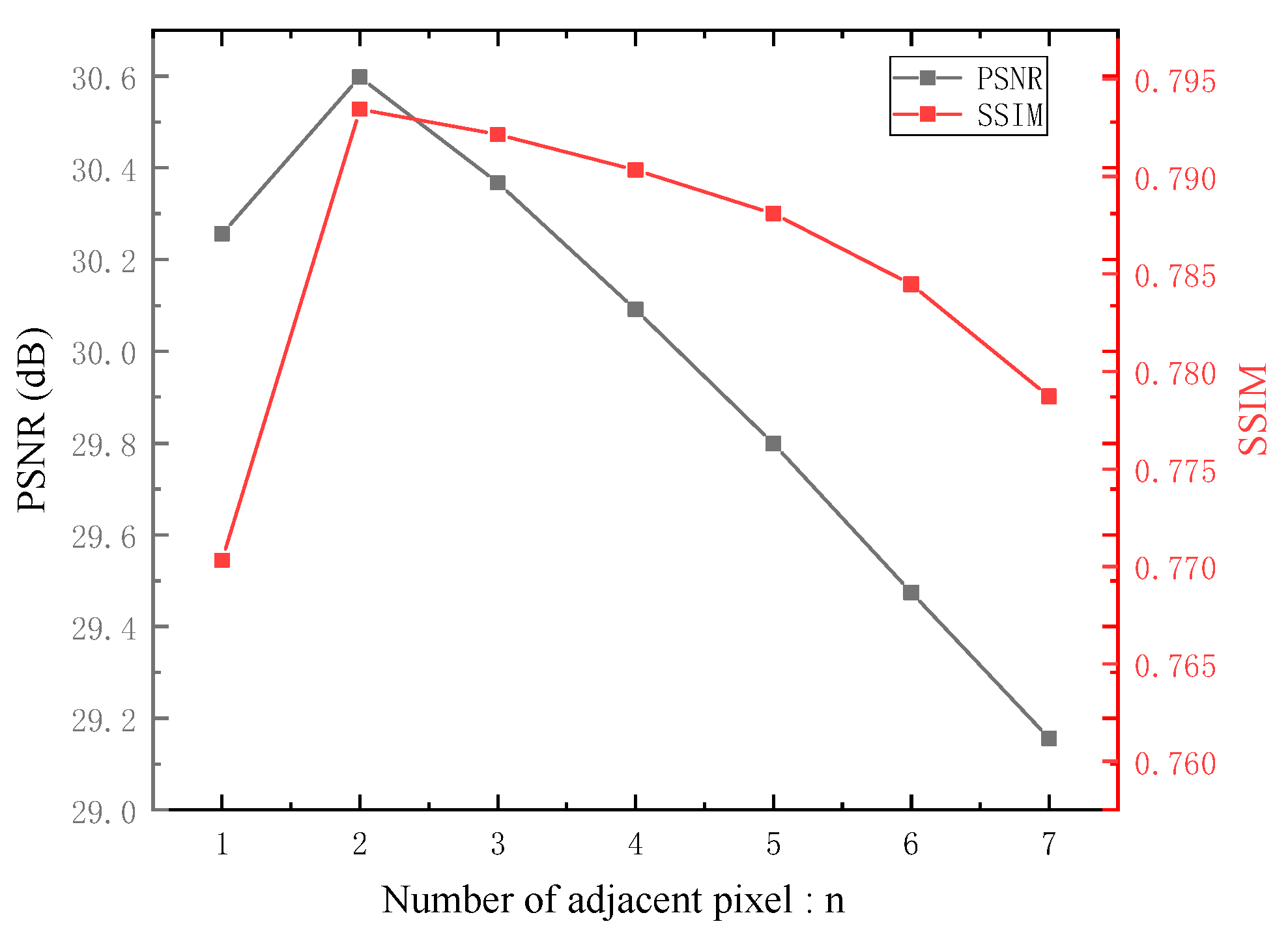
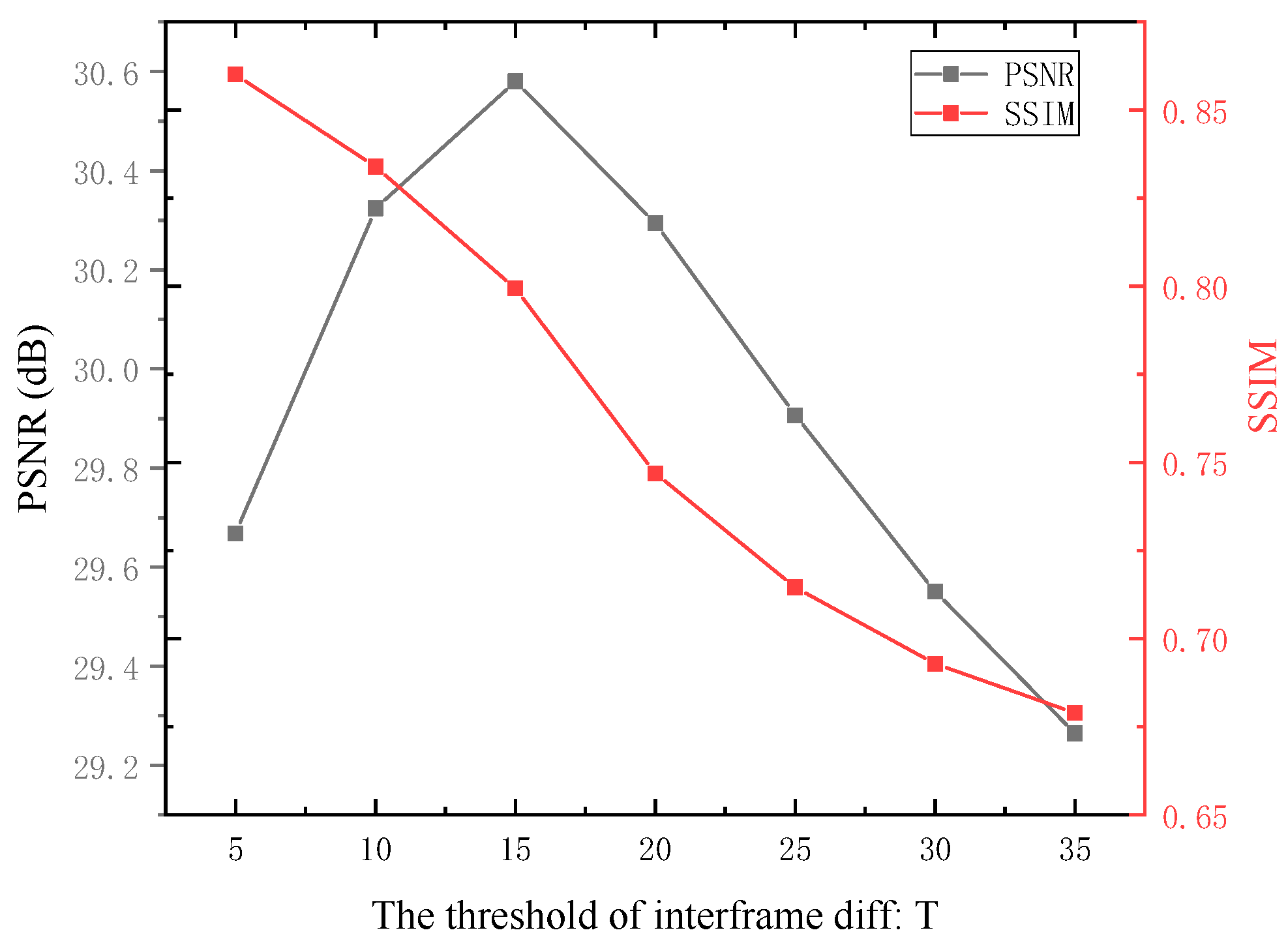
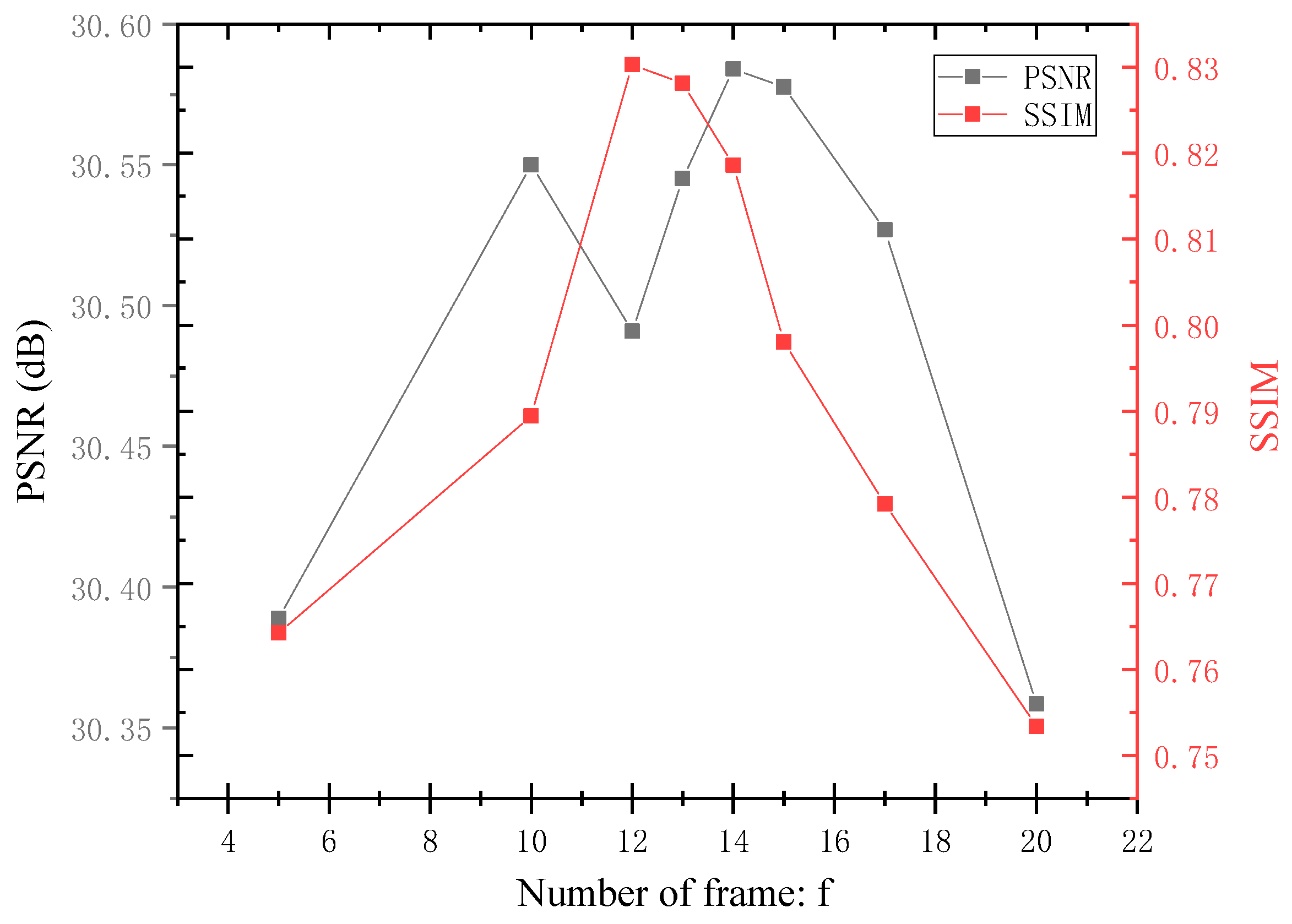
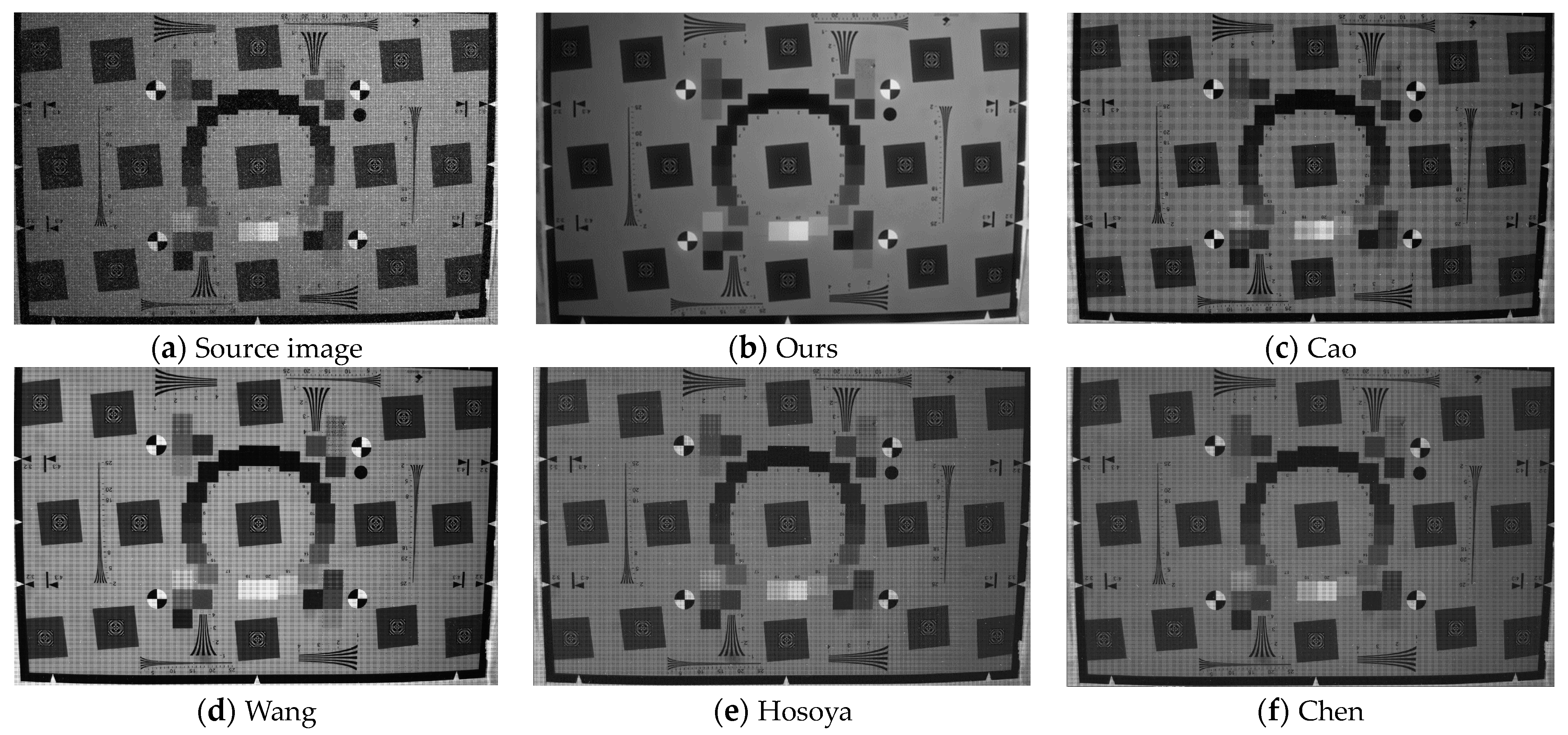
| Index | Source Image | Ours | Cao | Wang | Hosoya | Chen |
|---|---|---|---|---|---|---|
| PSNR (dB) | 20.1 | 30.59 | 24.7 | 27.8 | 25.6 | 26.4 |
| SSIM | 0.47 | 0.82 | 0.59 | 0.73 | 0.65 | 0.70 |
Disclaimer/Publisher’s Note: The statements, opinions and data contained in all publications are solely those of the individual author(s) and contributor(s) and not of MDPI and/or the editor(s). MDPI and/or the editor(s) disclaim responsibility for any injury to people or property resulting from any ideas, methods, instructions or products referred to in the content. |
© 2023 by the authors. Licensee MDPI, Basel, Switzerland. This article is an open access article distributed under the terms and conditions of the Creative Commons Attribution (CC BY) license (https://creativecommons.org/licenses/by/4.0/).
Share and Cite
Li, K.-F.; Feng, J.; Li, Y.-D.; Wen, L.; Kan, Y.-J.; Guo, Q. A Method for Restoring γ-Radiation Scene Images Based on Spatial Axial Gradient Discrimination. Electronics 2023, 12, 3734. https://doi.org/10.3390/electronics12173734
Li K-F, Feng J, Li Y-D, Wen L, Kan Y-J, Guo Q. A Method for Restoring γ-Radiation Scene Images Based on Spatial Axial Gradient Discrimination. Electronics. 2023; 12(17):3734. https://doi.org/10.3390/electronics12173734
Chicago/Turabian StyleLi, Kun-Fang, Jie Feng, Yu-Dong Li, Lin Wen, Yong-Jia Kan, and Qi Guo. 2023. "A Method for Restoring γ-Radiation Scene Images Based on Spatial Axial Gradient Discrimination" Electronics 12, no. 17: 3734. https://doi.org/10.3390/electronics12173734
APA StyleLi, K.-F., Feng, J., Li, Y.-D., Wen, L., Kan, Y.-J., & Guo, Q. (2023). A Method for Restoring γ-Radiation Scene Images Based on Spatial Axial Gradient Discrimination. Electronics, 12(17), 3734. https://doi.org/10.3390/electronics12173734





